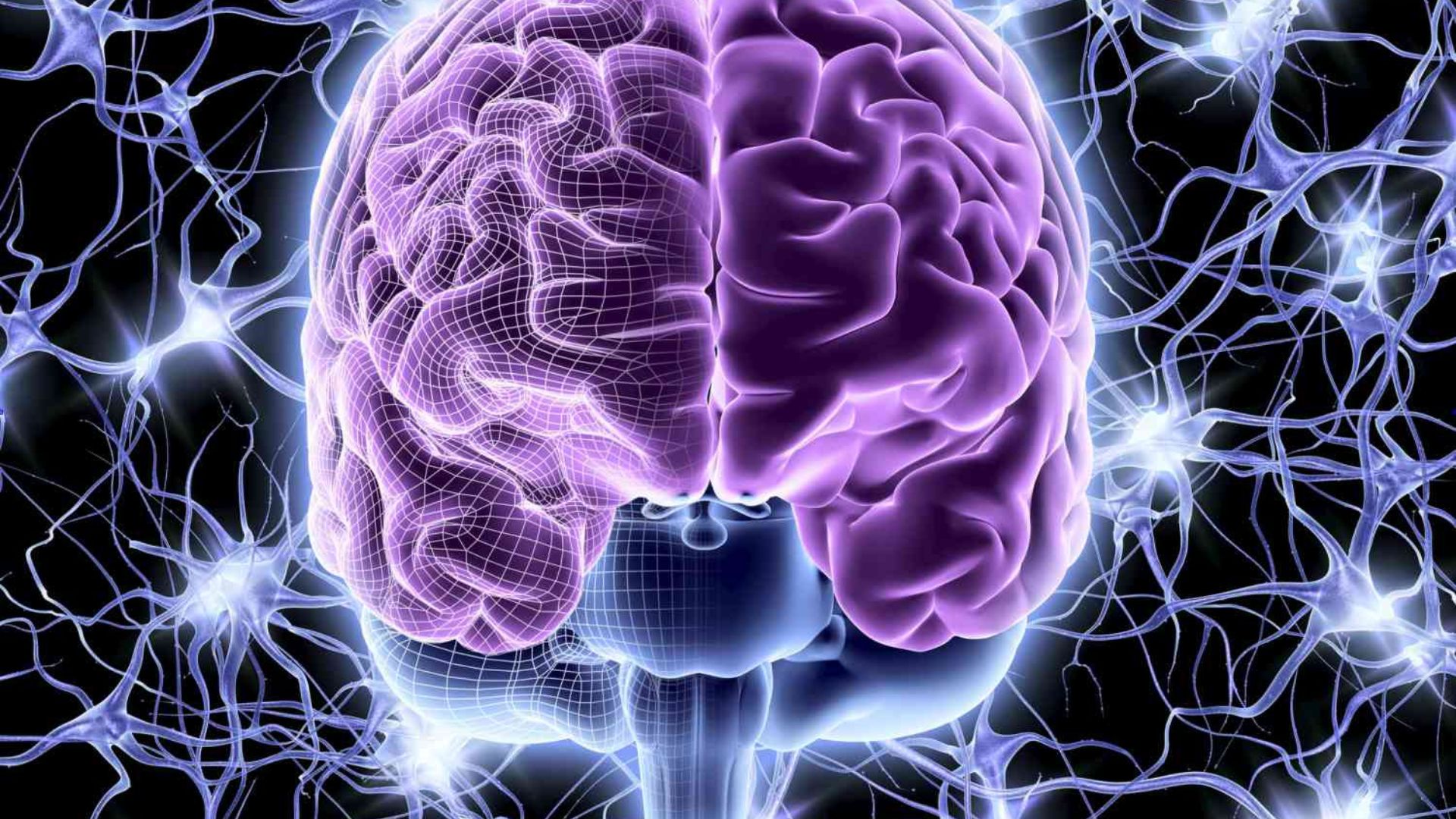Introduction
Have you ever wondered what controls your body’s actions both voluntary and involuntary? The answer may sound a lot simpler than it looks, it’s your central nervous system along with your endocrine system. That’s what we will talk about in today’s episode of our series An Essential Guide to Your Body and Brain Episode 3 Body Control.
A Unique Learning Opportunity!
If you are interested in this topic you may also be interested in learning more on how managing feelings and emotions can improve your wellbeing. You can learn about this with emotional intelligence training.
Episode Audio
Episode Transcript
0:03
spreading through every tissue in an electrical web. The nervous system is the body central controller and communicator. Its billions of neurons or nerve cells connect with one another in a network of intricate complexity. Along with the endocrine system, the nervous system dictates every action the body takes. Its sensory nerves deliver information about the outside world, and its primary organ, the brain is the seat of the mysterious processes of human consciousness. What does all of this look like? Anatomically speaking, it literally starts at the top, enclosed in the skull, the brain is a double handful of pinkish Gray, mushy tissue containing billions of neurons, and an even higher number of support cells called glial cells. 12 pairs of cranial nerves branch off from the base of the brain to the head and the upper body, many more nerves run from the brain down through the spinal cord in the center of the vertebral column. 31 pairs of spinal nerves extend from the spine to the muscles and glands of the body. And finally, nerves divide as they fan out through the body and into the skin. Amazing, isn’t it? And this amazing thing is what we’re going to talk about today. Welcome to a new episode from our series, an essential guide to your body and brain. In our first episode, we talked about the body we talked about the structure of the body. Our second episode was dedicated to the learning brain. And today we’re going to talk about the body control. And again, we’re going to talk about the brain, the nervous system, but in general, and in the way it controls the body. So are you interested, I hope you are because that’s what we’re going to do today. This is your host, Danny and this is a new episode from English plus podcast.
2:07
Now before we start, let me remind you that you can find the transcript of this episode on my website, English plus podcast.com. The link is in the show notes, it will take you to the custom post I created for this episode. But while you’re on the website, take some time to check out the many learning opportunities you have on the website. And it’s not just learning it’s having fun at the same time, there are the audio series, the video series, there are some courses and books that I created. If you want to check them out and maybe buy the courses or the books, you can opt into my free English plus bytes, which is a program I have started recently, in which I will send you a daily email of small sized bytes of information that will help you take your English to the next level without spending a lot of time and information is delivered to your inbox every day. And if you like what you see on the website, and you want to take it a step further, you can become a patron on Patreon and enjoy all the benefits that come with becoming a patron. In this way you will be supporting me supporting the show and helping me create more of the content you love. And at the same time, you will enjoy a lot of benefits. And with that being said, let’s not waste any more time. And let’s dive right into our episode for today. From our series an Essential Guide to your body and brain and today’s episode Episode Three is about body control. That’s what we’re going to do next. Don’t go anywhere. I’ll be right back.
3:36
So let’s start talking about the electrical web we have in this control system in our body. The basic unit of the nervous system is the delicate neuron. The neuron is notable for its ability to conduct electro chemical messages from one part of the body to another, like cardiac muscle cells neurons are long lived surviving an entire human lifetime. However, mature nerve cells are unable to divide and to reproduce, and for the most part, they cannot be replaced if they are destroyed. This is why damage to the brain or spinal cord is often irreversible. Now what about a neuron what can we find what are the parts of a neuron most neurons consists of three parts the cell body and two kinds of nerve processors or fibers. These fibers are the dendrites which are short branch like extensions reaching out from the cell body and there is the long thin electrically excitable projection called the axon. Each axon finishes up in the spreading axon terminal with up to 10,000 or more branches and each branch ends in a rounded bulb or knob. Nerve impulses traveled from one neuron to the next via sin
5:00
absence and synapses are the points where axons terminal branches reach the dendrites of other neurons. Neurons are bolstered by little appreciated cells known as neuroglia, also called glial cells, which provide nutrients and a supporting framework of tissue for their neuronal cousins. Very interesting, isn’t it? And now we’re going to talk about signals and neurotransmitters. But before we do that, I will have to share some cutting edge technology that has to do with studying the brain that’s coming next. Don’t go anywhere.
5:40
Now, we will call this technology the jello brain? Well, you might think jello What What are you talking about? Well, until recently, studying the brain’s complex three dimensional workings has involved lining up two dimensional slices and attempting to reconstruct what goes there. This may all change with the advent of a new technique fittingly called Clarity. Researchers at California Stanford University have devised a way to infuse an entire brain with a gel that fixes to almost every tissue, but avoids the lipids or the fats that block the light. After washing the brain with a detergent that flushes out the lipids, voila, nerves and structures of the brain come into view, as if preserved in clear jello. And that’s why we call the jello brain. So far, the technique has been applied to hold mouse brains and portions of human brains, scientists could use the knowledge gleaned to solve a range of brain mysteries from the roots of schizophrenia, to the mechanics of post traumatic stress. So it’s very interesting. And the results that can come out from this jello brain thing or actually, the real name for it is clarity is huge. And we can understand a lot of the mysteries we didn’t know about before that reside within our heads. But that was just a breakthrough I wanted to share with you. Now let’s continue our episode and our topic for today, body control, and let’s talk about signals neurotransmitters that’s coming next, don’t go anywhere, I’ll be right back.
7:23
Regardless of its shape, or place in their nervous system, every neuron can send an electrical impulse down its length, and transmit that impulse to another cell. That Impulse Triggers a tiny voltage change on its surface. This voltage change then whizzes down the length of the axon at a speed of up to 65 miles or 105 kilometers per hour, a neuron can fire repeatedly and rapidly up to 1000 times per second. Can you imagine the speed of that, when the signal reaches the terminal bulb of the end of an axon, it usually triggers the release of chemicals called neurotransmitters in less than 1,000th of a second, that chemicals diffuse across the tiny space of the synapse, which is the gap between the transmitting axon and the receiving target cell and bind the receptors on the target neuron. The receptors then activate their own neurons and either prompt it to fire off an impulse in turn or inhibited from firing. So neurotransmitters, right what are they, the scientists have discovered dozens of different neurotransmitters at work in the nervous system, and more are sure to be found. Many bind to be specific receptor like a key in a lock, and each has a different specialized set of effects. Many drugs, legal or illegal work by altering the flow of neurotransmitters, flu, oxytocin, or what is known as Prozac and other drugs that affect the neurotransmitter serotonin are used to treat depression and similar illnesses. Cocaine allows dopamine which is another neurotransmitter to build up in pleasure centers of the brain. Research into neurotransmitters is one of the busiest areas of neuroscience and it promises insights into the causes of Alzheimer’s disease, Parkinson’s disease, depression, schizophrenia, and other ailments. So it’s very interesting to know about them and we still don’t know a lot we still don’t know about old neurotransmitters but we know about some of them and that can help us understand more and hopefully we will learn about a lot more neurotransmitters in the future that will help us explain those things and probably find a cure to these problems. So that was about neurotransmitters. Next, we’re going to talk about the command central the brain itself, so don’t go anywhere. That’s coming next. I’ll be right back.
10:04
The brain is the body central controller and the coordinator of virtually all its functions all the way from breathing to the act of solving an equation. For example, all of these amazing abilities come from a wrinkled jelly like mass weighing about 3.5 pounds or 1.6 kilograms, composed of about 100 billion neurons and up to 50 trillion neuroglia. The brain’s total number of synapses is about 1000 trillion, which is greater than the number of stars in our galaxy. Can you imagine that? That’s all in your head, everyone who’s listening to me, you all have it. So don’t underestimate that treasure that you have inside your head. But now let’s get back to the brain and talk about the regions of the brain. Now the brains four main areas, the brainstem, the cerebellum, the diencephalon, and the cerebrum, only the cerebrum handles conscious thought. The brainstem at the top of the spinal cord controls basic functions such as heartbeat and breathing, the cerebellum is primary job is to coordinate movement and balance skills wrote activities such as playing the piano are processed in the cerebellum. Then we have the diencephalon, which is located in the middle of the brain and cradled by the hemispheres of the cerebrum. the diencephalon, regulates a host of functions such as body temperature, hunger, and sleep. Now above these structures divided into hemispheres is the cerebrum making up more than 80% of the brain’s mass. It is the center of intelligence, reason, communication, memory and imagination. But as strong and complicated this brain is, sometimes things can go wrong, like a stroke. And of course, we’re not pretending to have an understanding of how strokes work and how to treat them or anything. But it is very important for us for anybody actually, to have an idea if a stroke is happening somewhere near you. So all you can do, of course, is called 911. But how do you detect that it is not easy, but there is the fast test, which I’m going to tell you about next. So don’t go anywhere, it’s very important for you to know that. So in case you see it, you might be able to save somebody’s life. That’s coming next. Don’t go anywhere. I’ll be right back.
12:32
So we’re going to talk about strokes here, which are also known as cerebrovascular accident or a brain attack. Now the stroke occurs when the blood supply to part of the brain is cut off, or a blood vessel bursts, brain tissue is damaged and can potentially die. In this case, strokes Come on quickly. Their symptoms typically include sudden weakness or numbness, difficulty speaking, blurred vision, dizziness, sudden severe headache, and confusion. Some stroke experts recommend that a companion perform the following quick test memorable with the pneumonic fast FASD. And you can test that on a potential stroke victim and it’s completely safe, don’t worry, it’s just a set of questions and fast stands for face, arms, speech and time. So remember fast it stands for Face arms, speech and time. That’s why we call it fast. But anyway, what should you do if you suspect a person in front of you is undergoing a stroke? Let’s start with f the face asked the person to smile and try to notice if one side of the face droops or not. If it droops, there is a possibility of a stroke. That was the F What about the second one, the A, which is the arms, ask the person to Raise both arms and see if one drifts downward. If one does drift downward, that’s also another sign of a brain stroke. And then you have the S which is speech, ask the person to repeat a simple sentence or the word slurred or repeated incorrectly. If that is the case, and especially if you have all three of the above or at least one of the above. So there is a chance the person is undergoing a stroke. And there comes the last letter which is T which is not asking any more questions time. If the person shows any of these symptoms, waste no time, call 911 immediately call any emergency line that you have immediately and let experts handle it because time is of the essence and you may be able to save this person’s life. So remember, the fast test is very, very useful and very easy to conduct. Remember the face, the arms, the speech, and if any of these three or a combination of these three, or maybe all of them definitely waste no time and call 911 or any emergency line for that matter to lead
15:00
Experts handle the situation. And again, you might be able to save somebody’s life. And now let’s move back to our episode and talk about memory that’s coming next. Don’t go anywhere.
15:16
learning and memory are complex processes that involve many areas of the brain feeding information back and forth. Learning, for instance, is a multi stage sequence of acquiring new knowledge through sensory experience and storage of that knowledge in memory. incoming information is held at first in working memory, which is a kind of short term storage facility. And remember, we talked a lot about that in our second episode. So if you want to learn more about that, just listen again to our second episode. Now let’s get back to talking about memory in this episode. So we said that incoming information is held in this working memory, which is a kind of short term storage facility in the cells of the prefrontal lobe, some working memories, perhaps because they are reinforced, then move into long term memory, a process that seems to be governed by the hippocampus in the limbic system. And there are categories of the memory, scientists are finding that information is broken down into multiple strands that are organized into categories and stored in scattered locations across the cerebral cortex, which is the surface of the cerebrum. Research now indicates that the brain has at least 20 categories for organizing information. Among them are plants, body parts, verbs, proper names, faces, colors, numbers, letters, and kinds of sounds. Studies of people with very localized brain damage show that these categories can have some surprising distinctions. One patient, for instance, could recognize and name small tools, but not large ones. It is strange, and nobody is even assuming that we have understood everything there is to understand about memory. But we’ve come a long way, of course, and now we know a lot about the memory. But can’t anything go wrong here. Well, of course, we may forget a couple of things now and then but there’s a problem that may happen. And here I’m talking about Alzheimer’s disease. And that’s what I’m going to talk about next. So don’t go anywhere. I’ll talk more about what can go wrong to memory and in the brain in general, of course, and here we’ll talk about the Alzheimer’s disease. I’ll be right back.
17:36
In the 100, plus years since German neurologist Eloise Ulzheimer first described unusual plaques and tangles in a demented patients brain, the eponymous disease has received much study but little in the way of useful treatment, its cause is still unknown, progressive, degenerative and ultimately fatal. Alzheimer’s is marked by the gradual loss of memory, learning, reasoning, communication and activities of daily living. It affects more than 5 million people in the United States almost all over the age of 65. Scientists have identified genes that are directly connected with a rare, inherited version of Alzheimer’s disease. The more common form of the disease may also be linked to mutations on genes that produce a molecule called beta amyloid. Finding certain biomarkers such as levels of better amyloid in the blood may allow doctors to detect the disease early before it significantly affects functioning at that stage, drugs now in early development might be able to prevent Alzheimer’s associated plaques from forming. And I’m not saying that is a cure, of course not. But it slows down Alzheimer’s, and patients may be able to live a normal life for much longer. So that was about Alzheimer’s disease. For those of you who might have heard of the disease, but you still don’t know what it is. Of course, I’ve just scratched the surface. There’s a lot to talk about Alzheimer’s disease, but we are here to learn about things. And my goal with all my series in English plus is one thing. Of course, there is no time to tell you everything and I’m not assuming that I know everything or I have time to research everything. But my main target is to pique your curiosity. If I can do that, and you finish this episode and go on looking up information about things you heard about in my episode, then for me, it’s mission accomplished because in this case, I was able to push you towards the motto of English plus which is never stopped learning. That’s what I believe in and that’s my mission in English plus, but now let’s not digress and let’s get back to our episode and our series and Essential Guide to your body and brain. We just talked about the memory and Alzheimer’s disease so
20:00
what’s coming next we’re going to talk about some other mental illnesses that’s coming next. Don’t go anywhere, I’ll be right back.
20:11
Mental illnesses such as schizophrenia and depression used to be considered diseases of the mind rather than have the brain. Today the distinction is blurred as is the line between Psychiatry and Neurology. Most mental illnesses are now viewed as disorders of the communication systems within the brain. The neurotransmitters that speed signals from neuron to neuron, many also have a clear genetic component, and the effects of a person’s environment, particularly psychological traumas, and long term stresses are also important factors. So let’s talk about schizophrenia. Schizophrenia is a good illustration of the complex nature of mental illness. This disease is marked by serious disruptions in thinking, perception, language and sense of self, the illness is genetically linked, and the age of the father plays a part, men over 50 have three times the risk of fathering a schizophrenic child than men under 25 do. Schizophrenia has also been connected to improper brain development during fetal growth. And finally, stress is a major player, a stressful life episode can often trigger schizophrenia. So it is a complicated thing. And you cannot say that it is the mind the brain, I’m talking about psychology only, or is it neuroscience and biology based on recent studies, in most cases, it’s both. And they’re kind of intertwined in a way that you cannot differentiate one from the other, or you cannot draw a boundary between the two. And we need to study them both to be able to understand what’s happening, and all those mental illnesses, and maybe have a chance at treating those mental illnesses. So we’ve talked about mental illness, especially schizophrenia. And next we’re going to talk about the information highway. That’s coming next. Remember, we’re still talking about body control in this episode, right, and part of this body control is the information highway, which is right inside our body that’s coming next, don’t go anywhere, I’ll be right back.
22:23
The spinal cord is the nervous system central highway connecting the brain to the rest of the body. Information from the body zooms up this bundle of nerves to the brain, while commands from the brain flash down the cord to muscles and organs. In some cases, such as in the quick reactions of reflexes signals travel to and from the cord without passing through the brain at all, which is why a reflex is very fast. But anyway, let’s talk about spinal nerves. The spinal cord and brain together form one continuous entity, which is called the central nervous system. The cord itself, which is shiny and white is about three quarters of an inch thick, which is about 1.9 centimeters, and it extends down from the brainstem for about 16 to 18 inches, or 41 to 46 centimeters. And here I’m talking about the average adult, it can be different of course, it is held within and protected by the vertebrae, which are the bones of the spine. By the way, some people might think that the spinal cords go all the way through the spine and has the same length as the spine does, but it’s not the case it actually stops at the first lumbar vertebrae, which is just below the lowest ribs. And now what about the nerves that extend from the spinal cord to you know, 31 pairs of spinal nerves extend from the spinal cord into the rest of the body. Each pair emerging from the space between two vertebrae. The lowest fare is part of a fine hairlike bundle of nerves called the cauda equina or the horse’s tail that drops from the base of the cord. All of these spinal nerves connect the brain and spinal cord to glands, muscles and sensory receptors. Some reach these areas directly but most connect via other nerves and nerve networks. Each one can be mapped to the part of the body it supplies. So that was about the information highway. Next we’re going to talk about making connections don’t go anywhere, I’ll be right back.
24:37
Millions of nerves connect the central nervous system the brain and the spinal cord to the rest of the body. These nerves are known as the peripheral nervous system broken down into sensory and motor divisions. The peripheral nervous system registers sensations carries them to the brain and then takes commands from the brain back to the right
25:00
to the body. Let’s talk about sensory receptors. Sensory receptors come in three basic forms. They can be free nerve endings, which are exposed nerve fibers that register a stimulus. These are found everywhere in the body, but particularly in the skin and connective tissues, and they send Spain heat and cold tickles, etchings and some touch. encapsulated nerve endings wrapped in a connective tissue capsule respond to pressure discriminative touch which tells you the location of a touch and stretching of muscles more complex are the separate sensory cells found in the eyes and ears. And the highest concentrations of sensory receptors are found in the lips, the fingertips and the tip of the tongue. That’s why it gets is very important that anyway, sensory receptors can also be identified by the kind of sensation in which they specialize. Many respond to tactile sensations only like touch and pressure, vibrations, itching and tickling and do different kinds of free nerve ending feel sensations of heat and cold free nerve endings known as nociceptors registered pain property receptors, which are little notice receptors in muscles, tendons, and the inner ear, tell the position of all the parts of the body. When you close your eyes, stretch out your arms and touch your nose you are using your proprioceptive senses. So we talked about receptors and different kinds of receptors. Let’s talk about some inside activity and some involuntary actions. That’s coming next. Don’t go anywhere, I’ll be right back.
26:47
Nerves don’t just register sensations. They also keep the body in motion inside and out. Most impulses for voluntary movement begin in the brain’s primary motor area signals travel down cranial nerves to the face and head and spinal nerves to the rest of the body to reach the muscles. At the end of the journey. The terminals of the motor nerves form junctions with muscle cells, thus simulating them to contract these conscious voluntary movements flow through the somatic nervous system. But what about involuntary actions, the body’s internal housekeeping tasks like heart rate, digestion, sweating, opening or constricting blood vessels dilation or contraction of the pupils and a lot of others of course, these belong to the autonomic system, sensory neurons deep within the blood vessels and the organs monitor and send information to the brain about internal conditions such as blood pressure, and oxygen levels. It is in its output its motor activities that the autonomic system is really distinctive, commanding smooth muscle, cardiac muscle and some glands. autonomic motor neurons typically are classified as sympathetic or parasympathetic. Now, of course, this is a lot complicated, but generally speaking, the sympathetic division activates the organs in response to strong emotion. It is the fight or flight system, while the parasympathetic division inhibits activity and conserves resources at times of rest. Now, most organs receive signals from both divisions. And in stressful situations, that feeling of an internal tug of war between the sympathetic and parasympathetic systems is quite literal. Sometimes you can even feel it. So that was about the inside activity that happens within your body and about some involuntary action. Next, let’s talk about the senses. Don’t go anywhere, I’ll be right back.
28:54
When asked to name the senses, most people list five touch, vision, hearing, smell and taste, but physiologists group them differently. The general senses include the tactile sensations of touch, pressure, pain, and vibration. And the special senses are vision, smell, taste, hearing, and balance all of them associated with special receptor cells in the head. So special senses now of all the special senses, vision is probably the most important the eyes contain about 70% of the body sensory receptors, and nearly half the cerebral cortex is given over to Visual processing. And that’s why it might help sometimes to close your eyes if you want to concentrate on something else. Or if you want to figure out a solution to some problem, of course, when you can close your eyes. I mean, don’t do that while you’re driving your car, of course, but when you close your eyes, you free up like 50% or the other 50% of your cerebral cortex and you can concentrate on something else. So that may help but anyway,
30:00
That was about the special sense of vision, the special senses of taste and smell our close partners both are Chemical Senses registering their sensations through chemo receptors that detect chemicals dissolved in solution. Taste is said to be limited to five basic qualities sweet, sour, salty, bitter, and umami or MIDI. But receptors inside the nasal cavity can detect at least 10,000 different odors. The curling fluid filled structures in our inner ears are responsible for two senses hearing and equilibrium. Equilibrium monitors posture, which is the position of the body especially the head relative to gravity and straight line acceleration, such as the sudden forward movement of a car, for example. And now talking about the ears, I will have to dig in a little bit deeper and tell you about what happens when you turn on your music very loud for a long time. That’s coming next, because next we’re going to talk about how you should turn it down. That’s coming next. Don’t go anywhere, I’ll be right back.
31:11
The tiny hair cells that register vibrations in your ear are fragile instruments, it doesn’t take much noise to damage them permanently, leaving you among the 15% of Americans with noise induced hearing loss. Noise levels above 85 decibel do this kind of damage. lawn mowers, hair dryers, motorcycles and chainsaws can top this limit. And of course, so can movie theater, sound systems, nightclubs, and rock concerts. Among the most insidious culprits are earbuds attached to mp3 players, or your mobile phone for that matter. And that is specially because they may play music in your ears for hours, these players can reach 115 decibels. And because earbuds are inefficient transmitters, people often turn them up to the max. As a rule of thumb, if other people can hear your music when you have earbuds in or if you can’t hear any other noise through the sound you’re damaging your hearing. Keep mp3 players at no more than 60% at their maximum volume, or indulge in a pair of noise cancelling headphones, which transmit sounds at lower levels to better effect. Take care of your ears because trust me, those little hairs when they’re gone, they’re gone forever, and there’s nothing that can replace them. Not even with all the advanced technologies. Yes, when you lose your hearing, you might be able to hear but not like the natural hairs that are found naturally inside the inner ear. Don’t lose those you will be missing all the beautiful subtleties of whatever kind of music you like. And now that we have talked about the nervous system, we will move on to talk about the chemical messengers and the endocrine system. And these will be the last two things we’ll talk about in today’s episode. But these are very interesting, and you have to know about them, because that’s definitely part of the body’s control. So that’s coming next don’t go anywhere, I’ll be right back.
33:25
The human body has many ways to communicate body system to body system. The nervous system works like a landline telephone network with neurons conducting electrical impulses through fibers. The endocrine system is the nervous systems wireless counterpart. It signals are chemicals released into the blood, typically hormones that don’t connect directly to their targets. Many different hormones circulate through the bloodstream simultaneously, and all search for target cells whose special receptors pick up only specific signals. Let’s talk about glands here, which are the endocrine systems organs, and most of them are known as glands and they’re small and scattered throughout the body. They can be as tiny as a single cell or a group of cells. There are two kinds of glands exocrine and endocrine. endocrine glands have ducts and they produce non hormonal secretions like sweat and saliva that are released in specific places such as the skin and the inside of the mouth. endocrine glands specialize in producing hormones. endocrine glands lack ducts, their secretions are released into interstitial fluid that surrounds cells. From there the hormones diffuse into the capillaries and into the bloodstream. The endocrine system usually works under the radar to regulate metabolism, and yet it controls some of the most important processes in human life including growth, digest
35:00
Shin, and reproduction, its impact becomes dramatically apparent when the body enters adolescence and begins to go through puberty. At the time hormones, which are estrogen in women and testosterone in men turn girls into women and boys into men. So this is the endocrine system. Let’s talk about it a little more. That’s coming next. That will be the last part of our episode. It’s gonna be the end of today’s episode, but not the end of the series. We’ll talk more about the body and brain in our Essential Guide to your body and brain. And finally, in this episode, we’ll talk a little more about the endocrine system. Don’t go anywhere. I’ll be right back.
35:42
Where is the endocrine system or the endocrine glands? Well, actually, they’re located throughout the body. endocrine glands are small but powerful. And remember they are located everywhere they are located throughout the body. Dedicated glands include the pituitary, thyroid, parathyroid, adrenal and pineal glands. Other multipurpose organs including the pancreas, the hypothalamus, and the gonads, which are the ovaries in women and the testes in men can secrete hormones as well. Even the liver has hormone producing cells throughout the body. Isolated clumps of fat cells release a hormone called leptin, which regulates fat storage and appetite. patches of hormone producing cells line other major organs such as the stomach, the intestines, the kidneys, and the heart. Now of all these glands, the hypothalamus and the pituitary gland are the master controllers of our metabolism. The hypothalamus is a region of the brain. It’s not an organ on its own, but it nevertheless produces and releases hormones that control other glands. Some of these hormones stimulate actions such as growth, while others inhibit the same targets. Why the opposing actions, the two responses illustrate the Ying Ying genius of the endocrine system. Once the body response gets going, like the growth of a child’s bones, there will come a time such as adulthood when that action has to stop. The hypothalamus is a master of balance, keeping the body in tune and on time, the hypothalamus controls the pea sized pituitary gland at the base of the brain. This midget Marvel’s secretes no fewer than nine hormones that in turn control other glands to regulate growth, reproduction, milk production in women, and kidney function, among other things. And since we’re talking about glands, there’s only one more thing I would like to talk about, and that is diabetes, because we usually talk about things that work and we talk about what can go wrong, right? We talked about Alzheimer’s, remember, we talked about some mental illnesses. And here because we’re talking about the endocrine system and glands, and this is directly related to diabetes that can go wrong, that’s coming next. Don’t go away, I’ll be right back.
38:09
But 99% of the pancreas is tissue releases digestive enzymes that break down food. The remaining 1% is responsible for the hormones glucagon, which raises blood glucose levels, and insulin, which lowers glucose levels. When that 1% of the pancreas is damaged, it does not release enough insulin, and the body can process sugar. Too much glucose remains in the blood and the cells lack what they need, resulting in type one diabetes. Type Two Diabetes is less severe, but still dangerous. Type two diabetes may make enough insulin, but they lose the ability to use it properly. The imbalance in blood sugar caused by diabetes, if untreated, can bring on a host of serious consequences including heart disease, nerve damage, and blindness. And with that, with talking about diabetes, that will be the end of today’s episode we talked about a lot of things. I know that I repeated a couple of things from last episode. But last episode, we were talking about the learning brain where we talked about memory and we talked again about memory today, but I kind of presented different information here and there. But anyway, today’s episode Episode Three from our series, an essential guide to your body and brain we focused on the body’s control system. We talked about the nervous system we talked about the endocrine system and how they both control and regulate the action of our body whether it is voluntary action or involuntary action. And with that, we come to the end of today’s episode. Don’t forget that you can find the transcript of this episode. The link is in the show notes. It will take you to my website English plus podcast.com. And while you’re there, check out the many learning opportunities and the fun learning opportunities that you can find on the
40:00
A website from audio series to video series to daily English bytes. And of course there are some books and online courses that you can buy and you can also become a patron to support me and get a lot of more benefits that are exclusive to my Patrons on Patreon. The link is also in the show notes and that will be everything for today. This is your host Danny, thank you very much for listening to another episode from English plus podcast. I will see you next time.










0 Comments